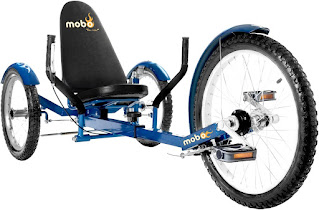Adaptive Bicycles for Seniors with Mobility Challenges: A Guide to Staying Active Outdoors
Staying active and enjoying the outdoors can be difficult for seniors with mobility challenges. Traditional bicycles may no longer be practical, but that doesn’t mean cycling is off the table. Adaptive bicycles offer a safe, comfortable, and empowering solution for seniors who still want to experience the freedom of two—or three—wheels.
In this article, we'll explore two popular types of adaptive bikes: recumbent bicycles and handcycles, and offer tips to help you choose the best one for your needs.
🚲 Recumbent Bikes: Comfort and Stability
Recumbent bicycles are a favorite among seniors for good reason. These bikes feature a reclined seating position, which relieves pressure on the back, neck, and wrists—ideal for riders dealing with arthritis or chronic pain.
Benefits of recumbent bikes:
-
Low center of gravity for enhanced stability
-
Back support from a reclined seat
-
Three-wheeled (trike) options for added balance
-
Electric-assist models available to reduce pedaling strain
-
Tandem versions for riding with a partner
Some recumbent bikes are even hand-pedaled for individuals with limited leg mobility, offering flexible options for different needs. (You can check out the model pictured here for a real-world example.)
💪 Handcycles: Power from the Upper Body
For seniors who cannot use their legs or have limited mobility in their lower limbs, handcycles offer a fantastic alternative. These bikes are powered by the rider’s arms and are designed with ergonomics and comfort in mind.
Key features of handcycles:
-
Arm-powered propulsion for those with leg impairments
-
Low and stable frame for balance and safety
-
Upright or recumbent positions to suit comfort preferences
-
Great upper-body workout while improving heart health
-
Customizable frame sizes and gearing
Handcycles are especially good for seniors with balance concerns or those recovering from surgery, as they provide a secure and stable ride.
🔍 Choosing the Right Adaptive Bicycle
Selecting the right adaptive bicycle involves more than just picking a model—it’s about matching the bike to the rider’s lifestyle, physical ability, and comfort level.
Here are a few tips:
-
Comfort is key: Try different styles to see what fits your body and movement needs.
-
Consider your terrain: Recumbents and handcycles are ideal for flat, paved areas. If you plan to ride off-road, make sure your bike is designed for it.
-
Electric assist is worth considering: If pedaling is a concern, many adaptive bikes offer electric support for hills and longer distances.
-
Set a realistic budget: Adaptive bikes can be costly, so shop around, check for used models, and see if local programs or insurance can help cover costs.
-
Visit a local shop: Many shops offer adaptive bike fittings and trials. Don’t guess—test ride!
✅ Conclusion
Adaptive bicycles empower seniors with mobility challenges to stay active, connect with nature, and experience the joy of cycling again. Whether you choose a recumbent bike for comfort and back support or a handcycle for upper-body strength, there’s an option that can meet your needs and keep you moving forward.
Take your time exploring the possibilities, and once you find the right fit—you’ll be amazed at the freedom it brings.



Comments
Post a Comment